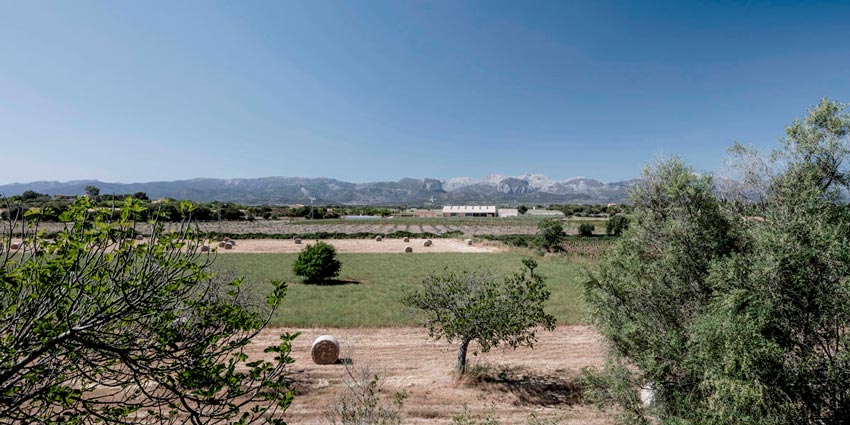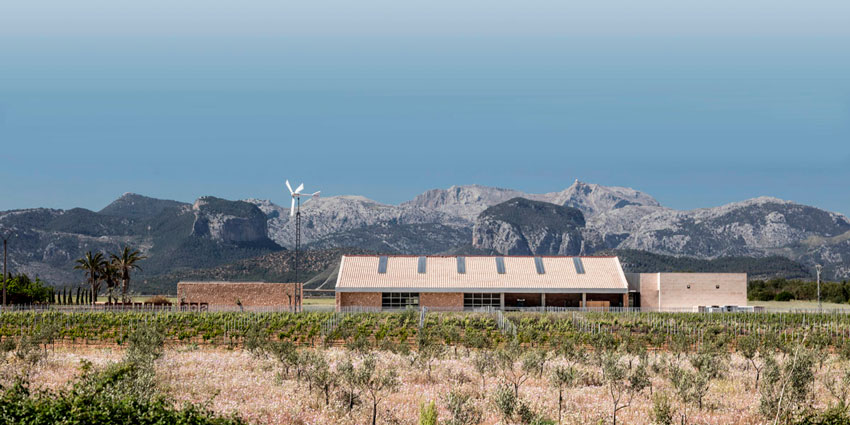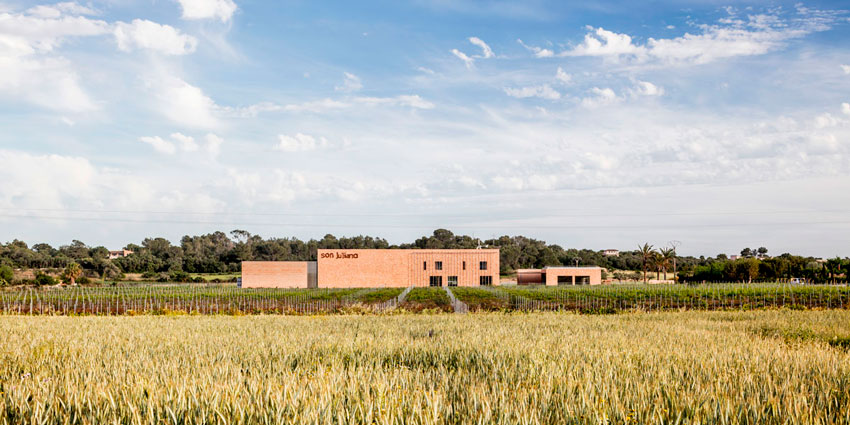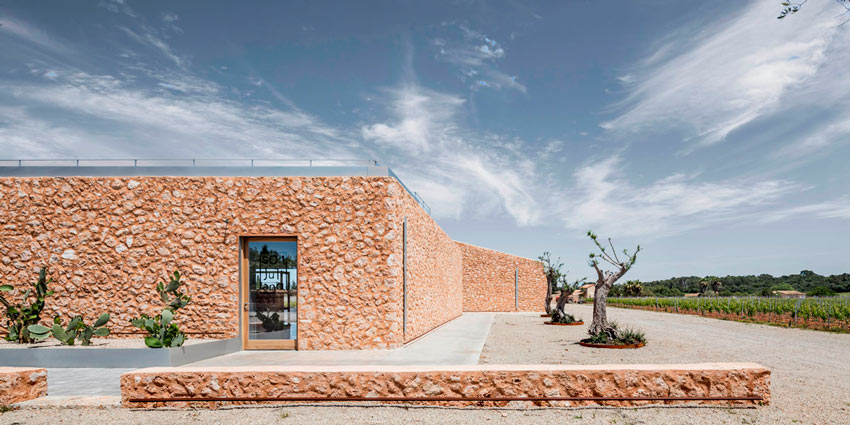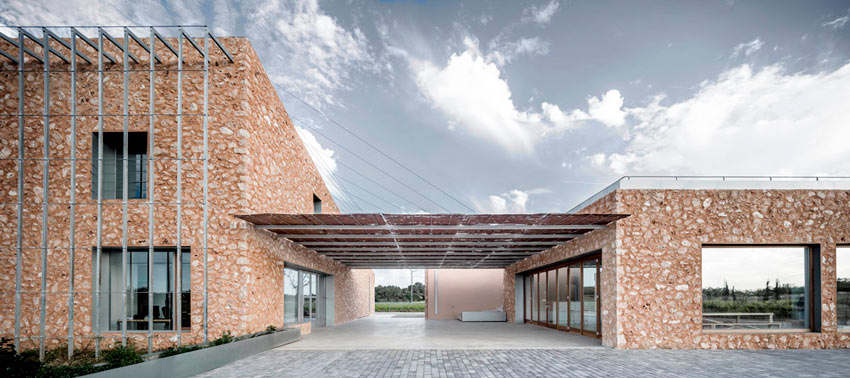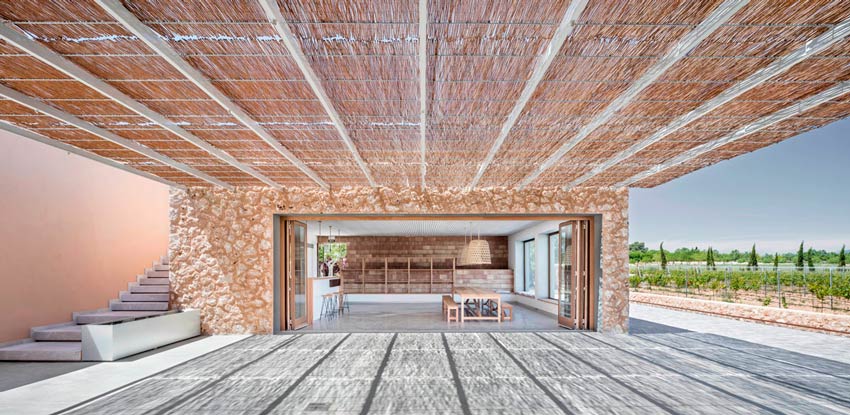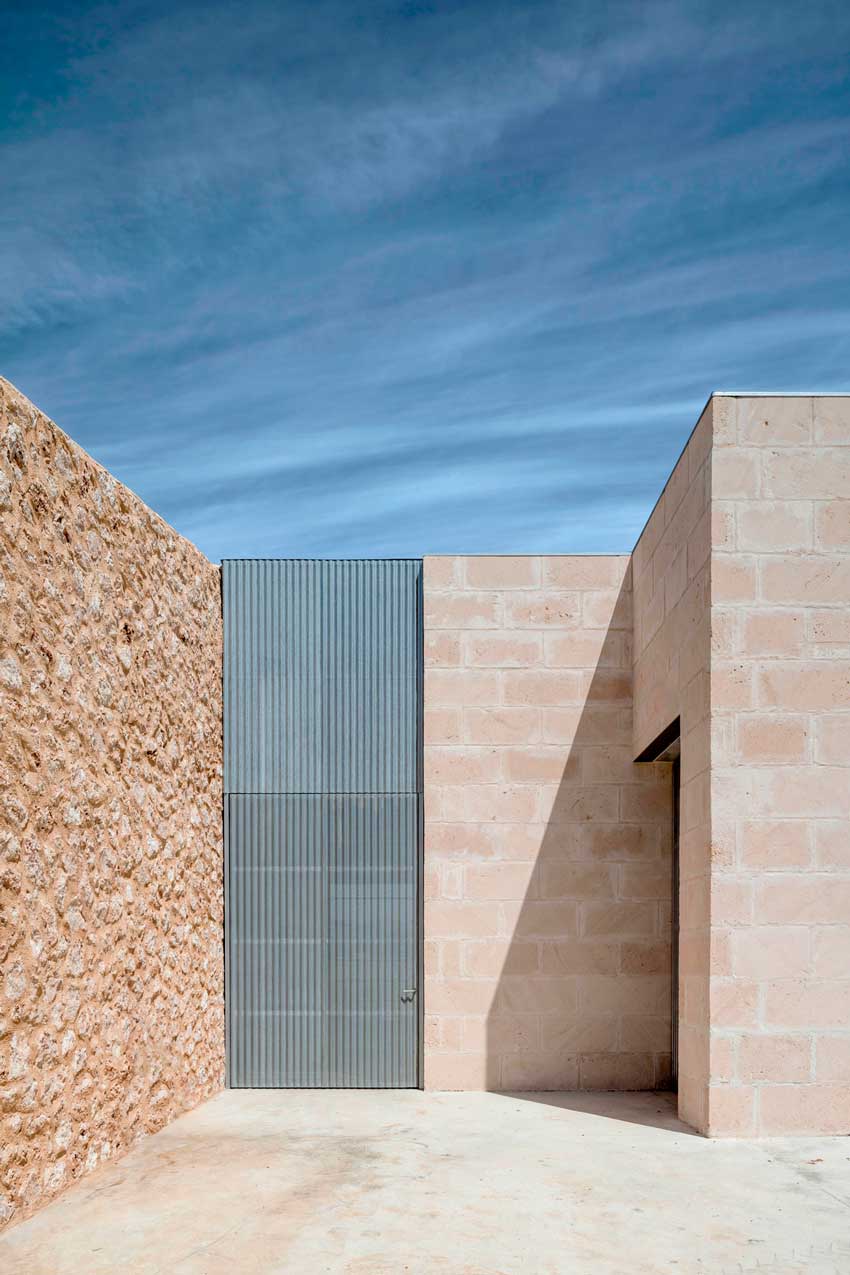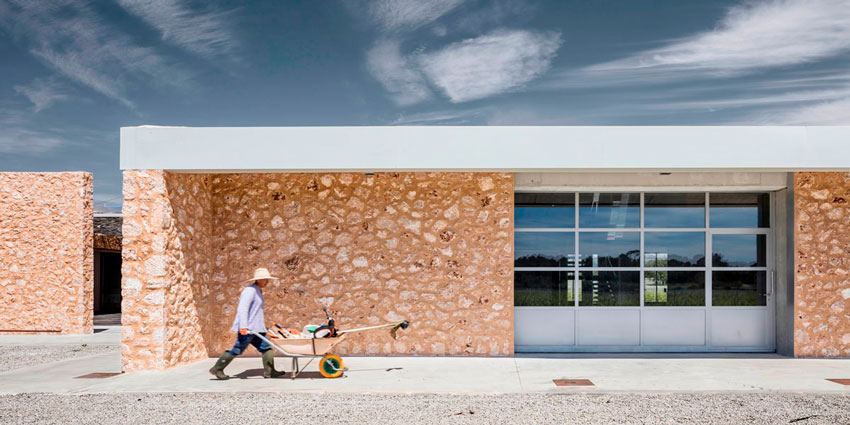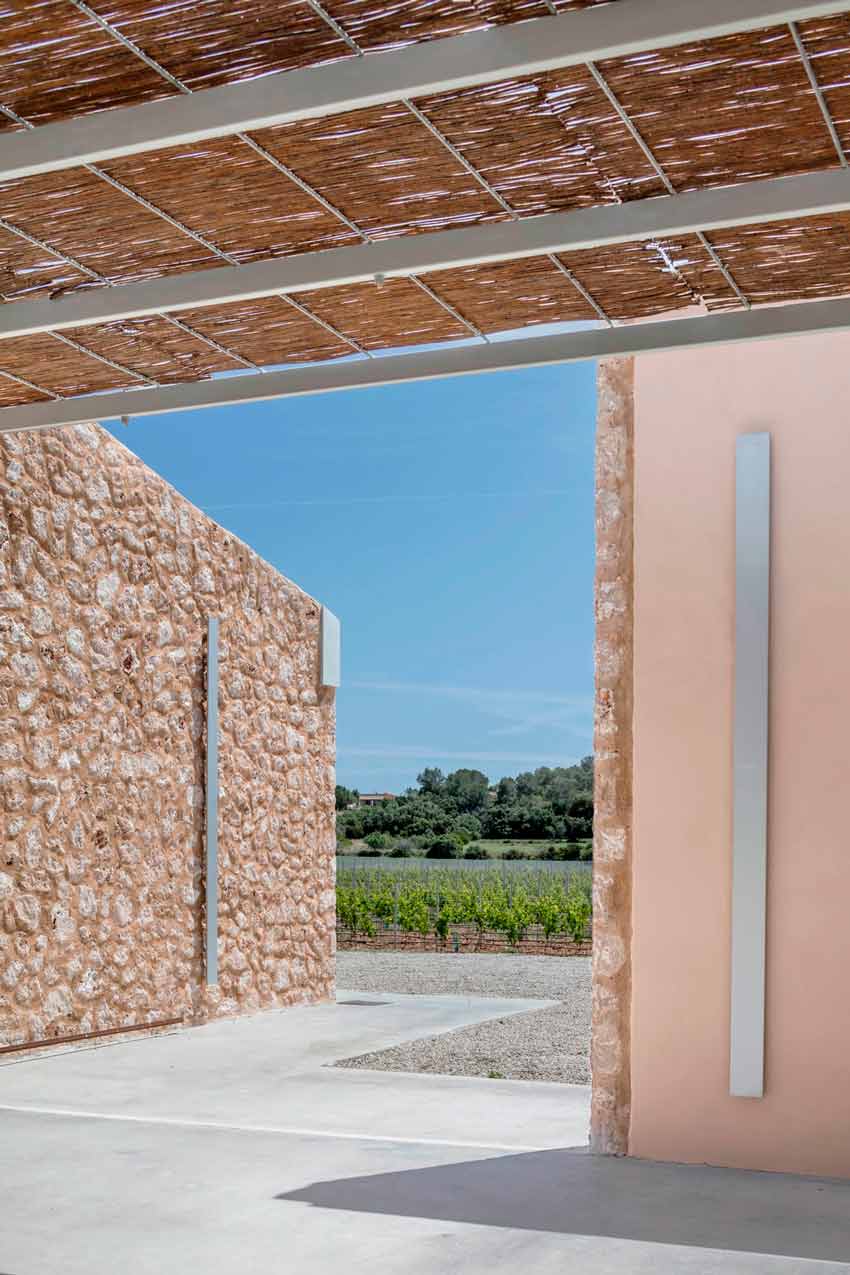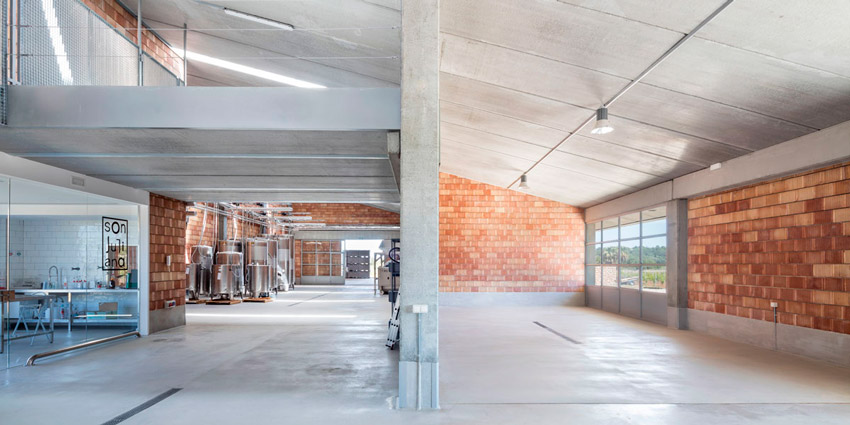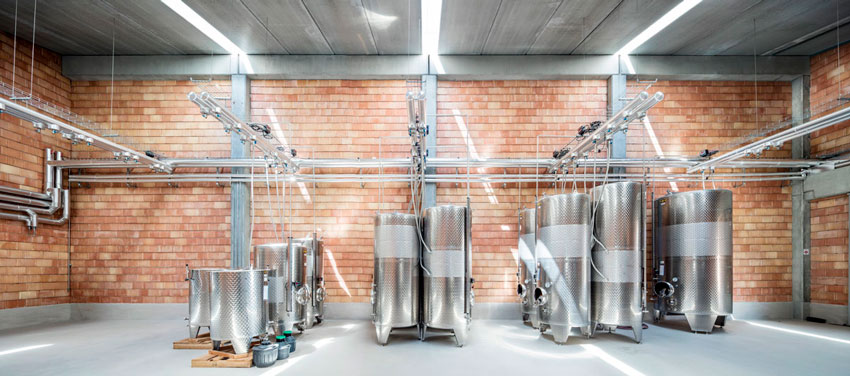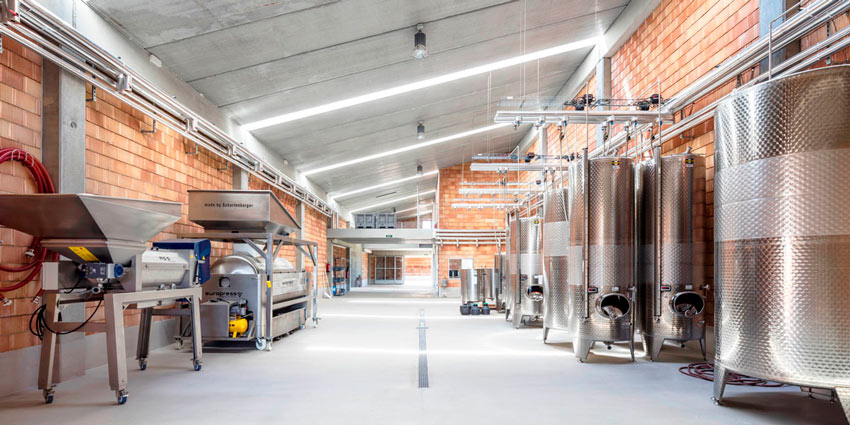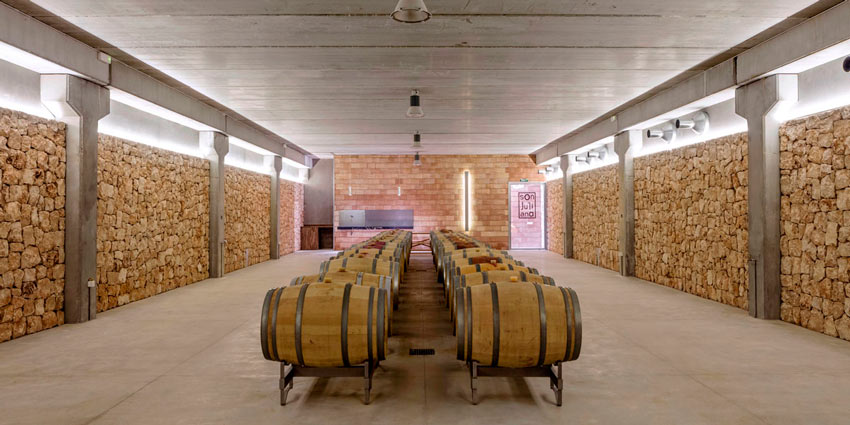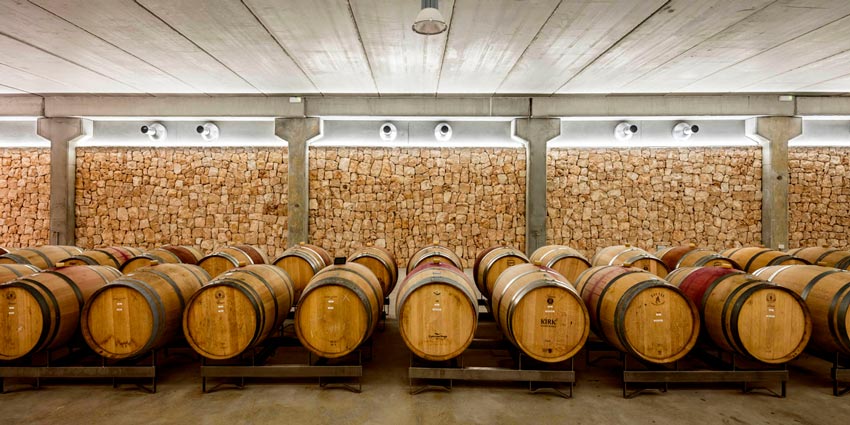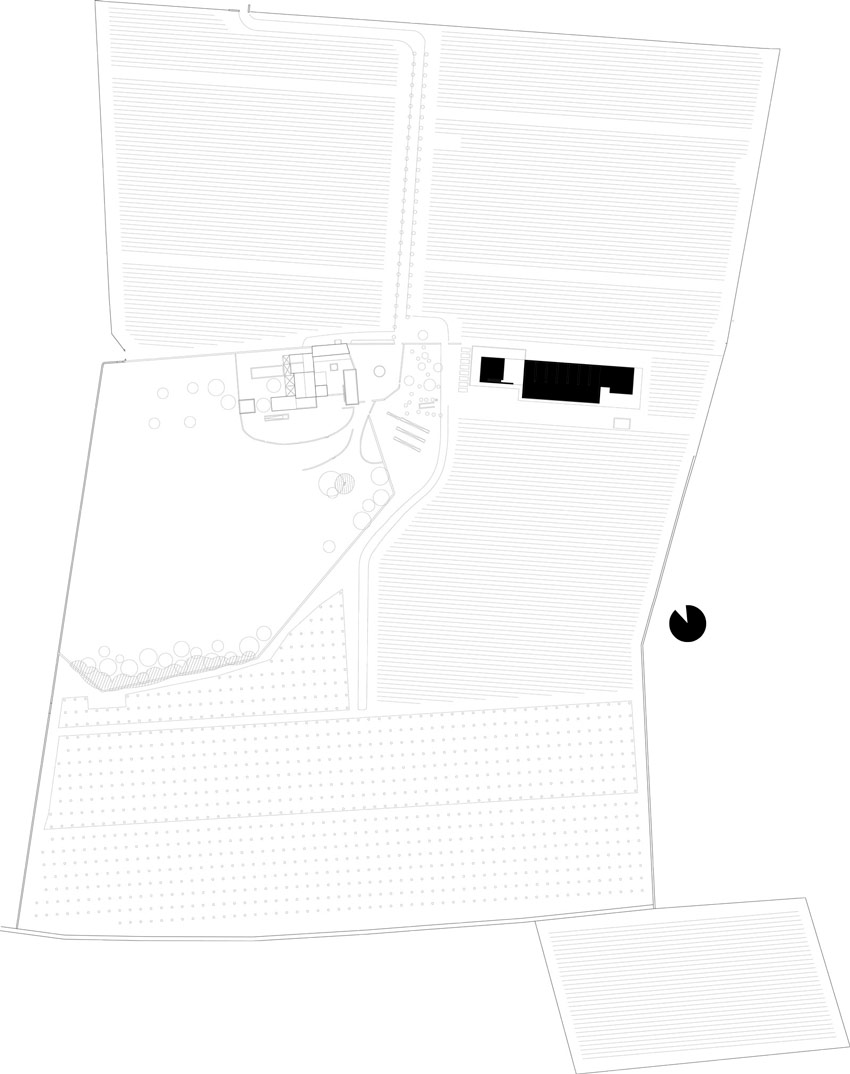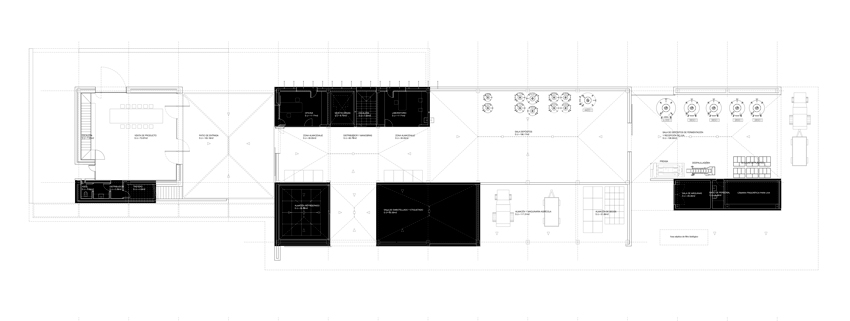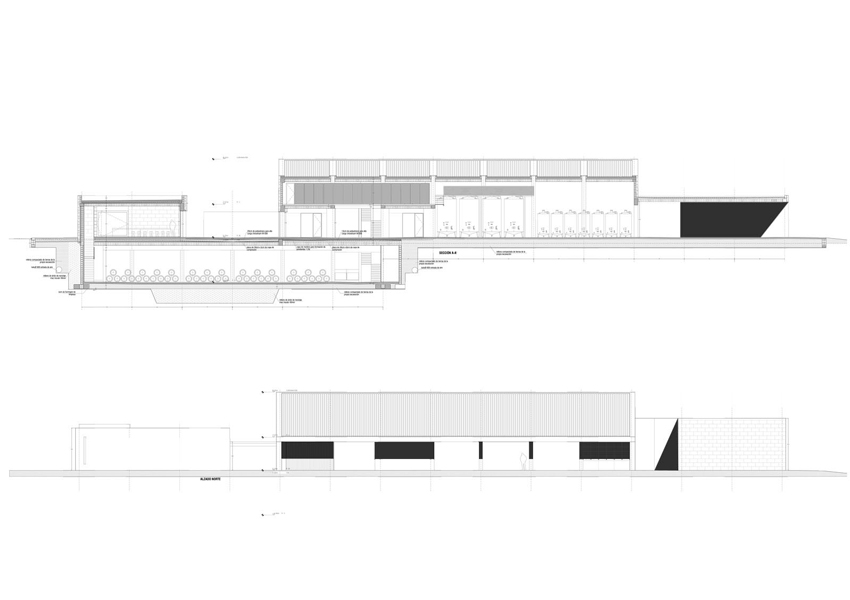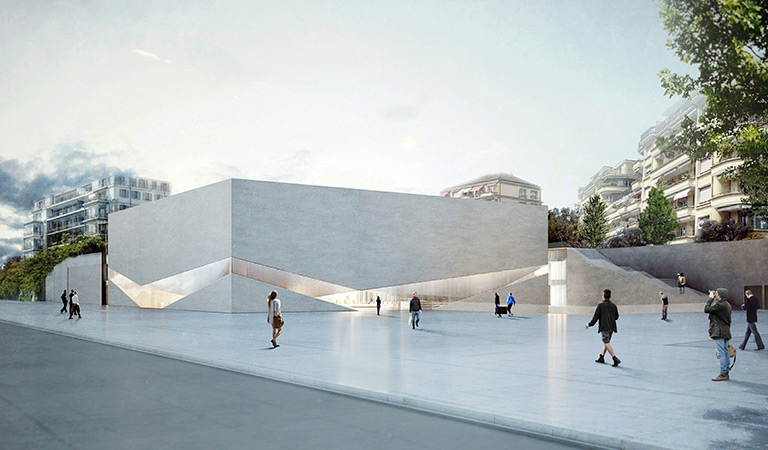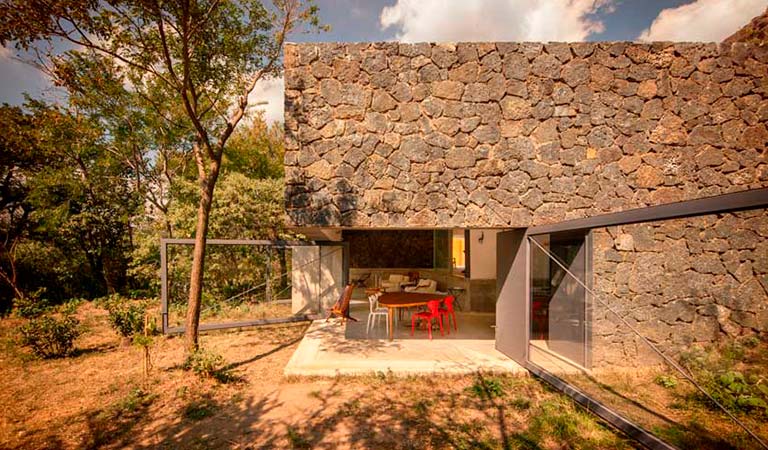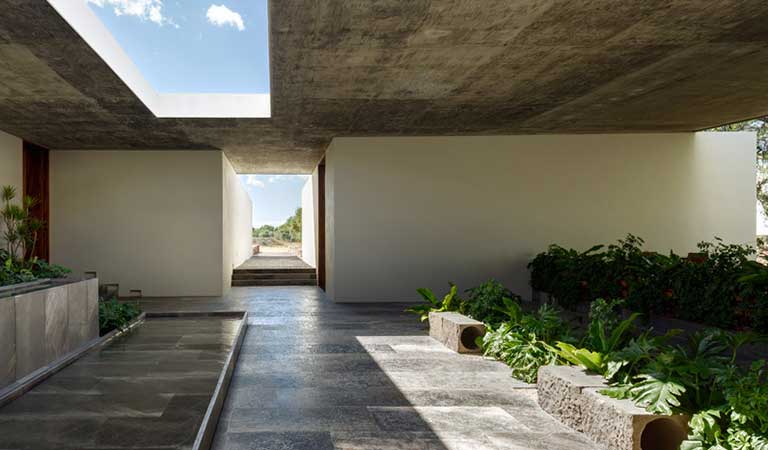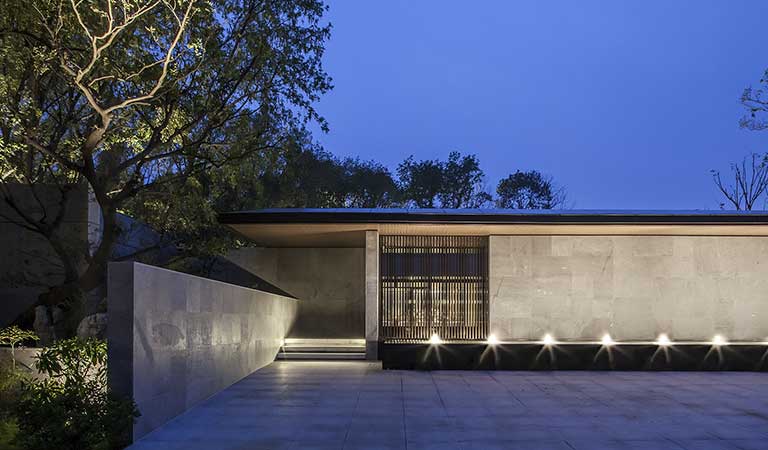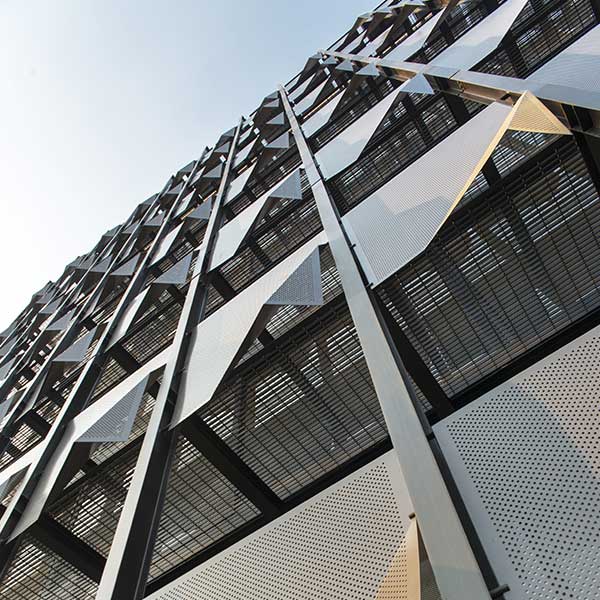Architects: Munarq, Pau Munar, Rafel Munar
Area: 1.300 m2
Date of project: 2014
Date of conclusion: 2016
Location: Pol.2 Parc.964 St.Eugènia
Photography: Adrià Goula
—Description by Munarq —
The Place:
The winery is located between Santa Eugènia i Biniali, from a flat topography and clay terrain, the landscape is defined by the Tramuntana mountains and the road to the farm. Thus the winery faces parallel to them to create the facade
Morphology:
A winery must meet three primary aspects namely: production, location and climate. These concepts are understood in the wine world as “terroir” and we define the morphology of the building.
Weather:
We are located in a depressed plain, where the wind and cold are characteristic. The east-west with a large roof closed south of the building expresses the need to close to the sun and allow ventilation and shade on the north side. The cover works as a shadow with 15 cm insulation and solar orientation minimizes the impact on other fronts.
Production:
The linear shape of the building responds to the production of wine, the grapes enter the eastern entrance, where there is the front porch, there is stripped and pressed, moving to room deposit, which creates fermentation more to the left and below the barrel room is situated on some wines should continue to mature, according to west found room bottled and labeled, connected to a room cooled to conserve before sale, the west entrance there is the sales room where the wine is tasted.
Thermal strategy:
The winery works with 100% renewable energy (solar, aerogeneració) and passive ventilation and geothermal systems. In the cellar are needed 18º.La thermoclay average temperatures and stone define the limit inside-outside of the building without the need to isolate because they are protected facades and ex post direct rays thanks to the sloping roof facing south, isolated with 15cm of cork.
Contact with the ground:
The winery is located in the basement, because it requires a special temperature and humidity conditions. The retaining walls are stone gabions to take advantage of the thermal mass and soil moisture that remained during the summer. The contribution of ventilation and temperature is carried through pipes connected to geothermal heat pumps.
